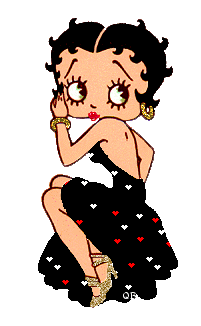

Nevertheless, says Pointer, “It was just so silly they wanted to get on with it,” bringing the lengthy lawsuit to a close without staging a widespread search for Jones.

To this day, there are no confirmed photos or recordings of Jones, and Jones herself never testified in the lawsuit. Baby Esther herself was not available to testify, but Fleischer Studios provided a screen test-now lost-of Jones that convinced the judge Kane had copied the singer. This was corroborated by Kane’s manager, says Pointer. Baby Esther’s manager claimed that Kane and her manager had seen Jones perform in 1928, then copied her style. The Fleischers trotted out a number of witnesses who claimed they’d heard “boops” and baby talk in nightclubs, cabarets and vaudeville theaters before Kane became famous.Īnd then came talk of Baby Esther, the stage name of an African-American performer named Esther Jones. But it stalled there, thanks to the origins of her signature sound. It seemed like Kane had a legitimate case-and her lawsuit made it all the way to the New York Supreme Court. Some of the testimony became almost hilarious.” The press had a field day with the concept of a performer attempting to protect her popular “boops.” The judge watched footage of Fleischer cartoons and Kane performances.Įventually, says Pointer, “the court stenographer threw up his hands. He brought three women to court who had voiced Betty Boop-each of whom claimed they hadn’t imitated Kane and did their Betty Boop voices to prove it. She sought $250,000 in damages and no further showings of Betty Boop cartoons- and claimed that phrases like “boop-boop-a-doop, boop-boopa doop, or boop-boopa-do, or boop-a-doop or similar combinations of such sounds or simply boop alone” were her own-part of what she called her “baby vamp” act.īut Max Fleischer, the animation pioneer who owned the studio, didn’t back down. But so did Kane herself-and when she experienced economic hardship due to a layoff, she took legal action against the animation studio. Two years before Betty Boop’s debut, Kane had skyrocketed to fame with the song “That’s My Weakness Now,” which used the phrase “boop-boop-a-doop” as shorthand for sex.Īudiences would have recognized the send-up of Kane, now a Paramount star. The New York Times called her “the most menacing of the baby-talk ladies”-a reference to a vaudeville phenomenon also used by performers like Fanny Brice and Irene Franklin. Like the vaudeville performers that preceded her, Kane used her little-girl voice to deliver lyrics that would have been shocking in the mouth of another singer. Kane’s delivery-including her signature “boop-boop-a-doop”-was “a theatrical staple going back years,” says Pointer. The squeaky-voiced jazz singer was known for her sexy lyrics and baby-like singing, and Betty Boop delivered a spot-on imitation.

Her wide eyes and sexy looks were a hit with audiences-as was the fact that she was a clear parody of popular singer Helen Kane. The new Betty Boop was a vivacious flapper who drove a car, did popular dances and showed plenty of skin. However video evidence came to light of Baby Esther performing in a nightclub and the courts ruled against Helen Kane stating she did not have exclusive rights to the “booping” style or image, and that the style, in fact, pre-dated her.īaby Esther’s “baby style” did little to bring her mainstream fame and she died in relative obscurity but a piece of her lives on in the iconic character Betty Boop.But soon, Betty’s ears became earrings and she was reinvented as a human being. When Betty Boop was introduced, Kane promptly sued Fleischer and Paramount Publix Corporation stating they were using her image and style. Finding fame early on, Helen Kane often included this “baby style” into her music. After seeing Baby Esther, Helen Kane adopted her style and began using “boops” in her songs as well. Betty Boop is best known for her revealing dress, curvaceous figure, and signature vocals “Boop Oop A Doop!” While there has been controversy over the years, the inspiration has been traced back to Esther Jones who was known as “Baby Esther” and performed regularly in the Cotton Club during the 1920s.īaby Esther’s trademark vocal style of using “boops” and other childlike scat sounds attracted the attention of actress Helen Kane during a performance in the late 1920s. Introduced by cartoonist Max Fleischer in 1930, the caricature of the jazz age flapper was the first and most famous sex symbol in animation. The iconic cartoon character Betty Boop was inspired by a Black jazz singer in Harlem. Esther Jones is the name of the real Betty Boop.


 0 kommentar(er)
0 kommentar(er)
